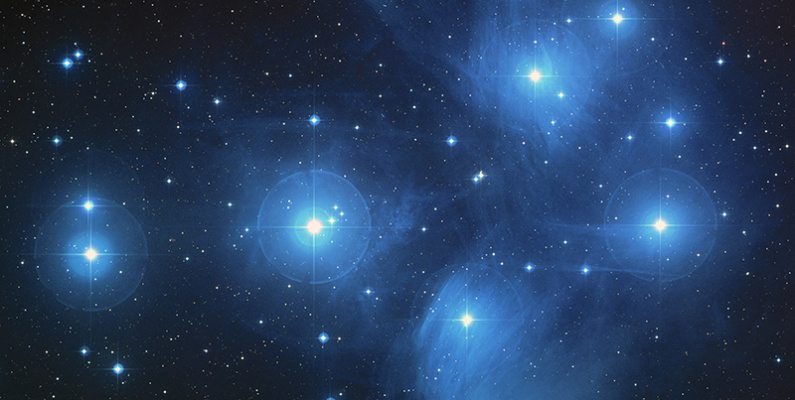
This Wednesday 21 June , it will be the winter solstice – the shortest day and the longest night of the year. For astronomers this is a great time to get outside and dedicate hours to looking up. This is helped by the waxing crescent phase of the moon. On the day of the solstice, the moon will rise at four in the morning and will have set by three in the afternoon. This means the view of the night’s sky will be unimpeded by moonlight until the wee hours of the morning.

Image credit: Ian Griffin
Solstices happen because the Earth’s axis is tilted. The solstice occurs twice each year, in summer and in winter, when the tilt of the Earth is towards (or away from) the sun. Conversely, the equinox, in spring and autumn, is when the tilt is parallel to the sun.
As Earth orbits round the sun, the angle at which we see the sun changes in the sky. In summer the sun reaches very high into the sky. Whereas in winter, it travels very low across the sky, rising and setting at a much steeper angle. So the winter solstice is also the day when the sun will reach its annual lowest point in the sky.
On 21 June, Dunedin will have eight hours, 39 minutes and 13 seconds of daylight. Sunrise will be at 8.20am and the sun will set at 4.59pm. That means for people who work from 8:30am until 5pm, you will both arrive and leave work during twilight. In total, since the middle of summer, we have lost seven hours and five minutes of sunlight. Of course, the 22nd isn’t much longer in terms of daylight – one second more than the day before.
I recommend that this winter solstice you take advantage of these long night-time hours. If the night is clear you will have an opportunity to enjoy:
- Orion and his two hunting dogs, Canis Major and Canis Minor, in the early evening
- Scorpio and the Galactic Centre in the later evening
- Jupiter and Saturn from dusk; and in the morning from 4am, Venus
- The Ophiuchus meteor shower (relatively weak, but keep your eyes peeled!)
- Matariki
Matariki, or the Pleiades cluster, will be rising the morning of the 22 June around 7am – it’s important to remember that during Matariki we see the cluster in the morning, not the evening. Luckily, it will still be dark, so the cluster should be lovely on our eastern horizon.
Matariki is of the highest rank of stars in the sky, as accorded by the tūpuna, or ancestors. This marks it as the cluster of stars that ushers in Māori New Year. In Dunedin however, we are so far south that the star Puaka (or Rigel) in Orion is also used to signal the shift into the New Year, since it rises just before Matariki.

NASA image of the Pleiades, adjusted for a Southern Hemisphere view
If you are interested in learning more about the solstice, the Otago Museum’s Solstice Stargazing planetarium show and field trip on 21 June is open for bookings through the Otago Museum website. There are just a handful of spaces left so make sure you book now to avoid disappointment. You can also come to a Sky Tonight Perpetual Guardian Planetarium show to find out what will be visible in the sky at that time, or attend a Dunedin Astronomical Society open night, every Sunday.
